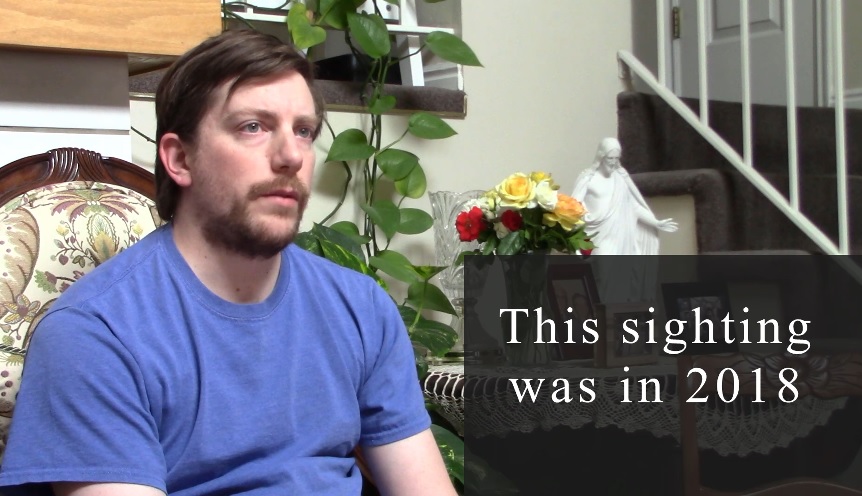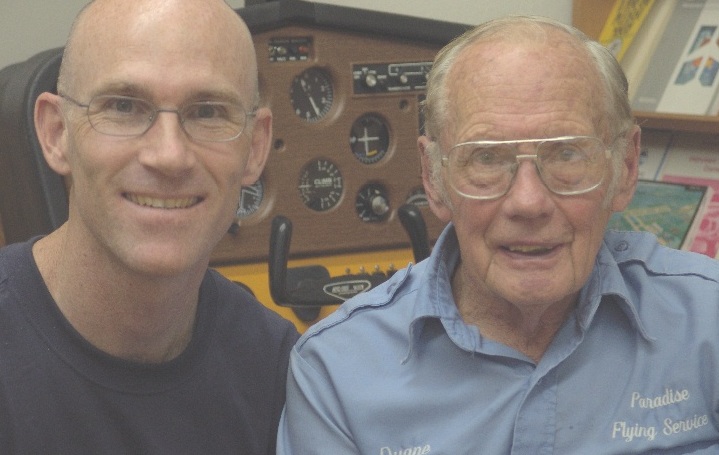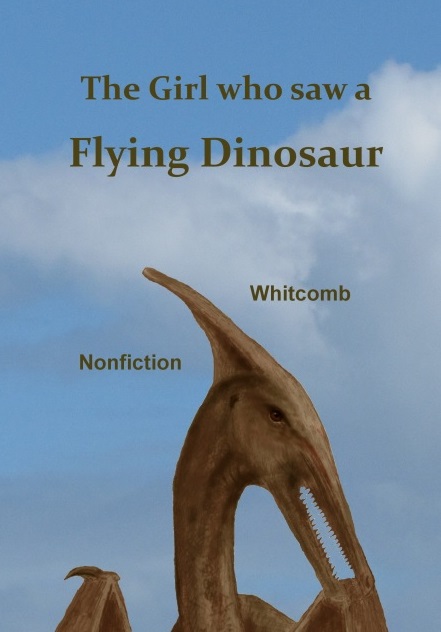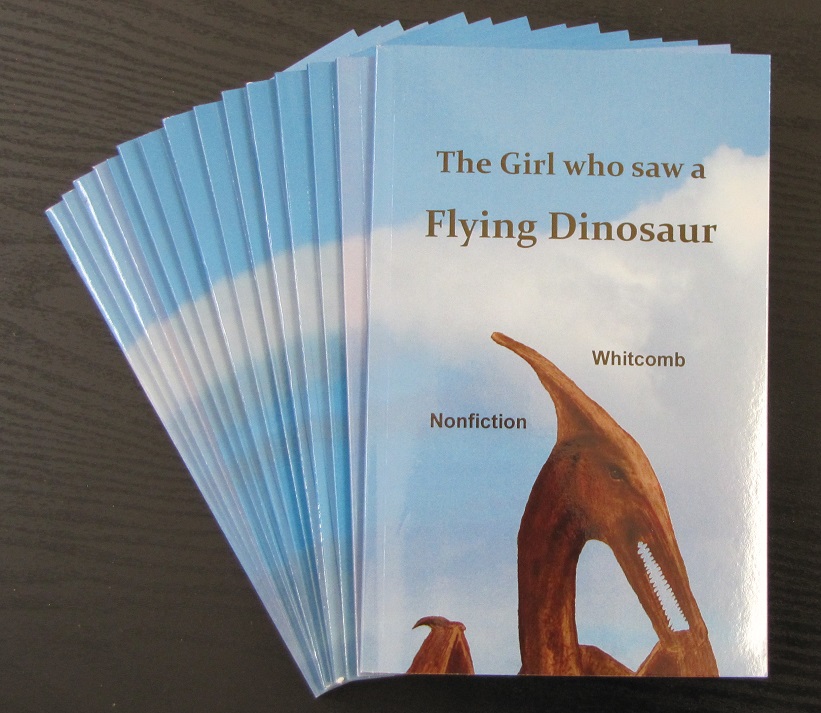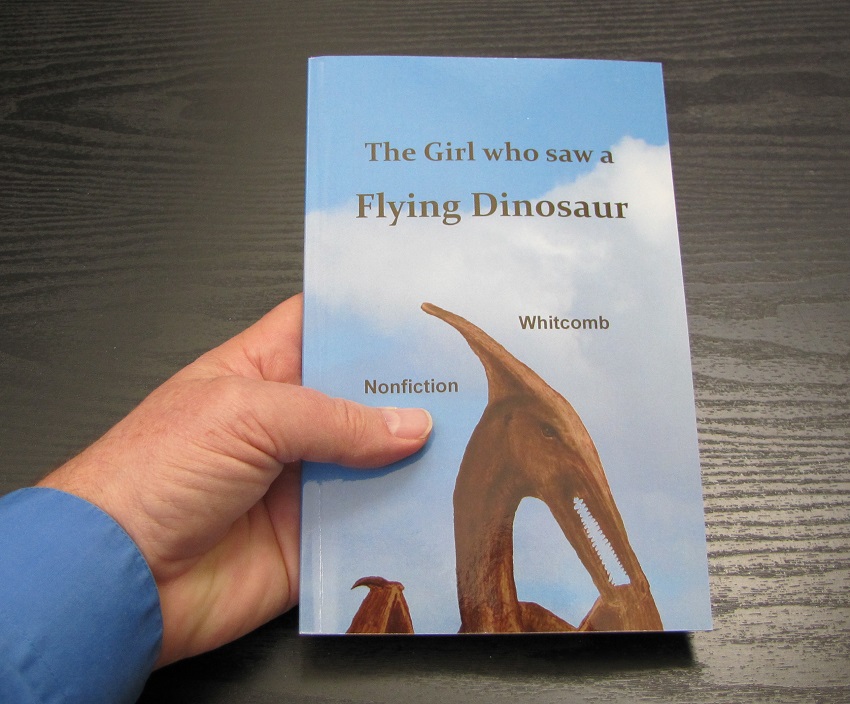PART ONE
By the living-pterosaurs expert Jonathan Whitcomb
This is a reply to a portion of a huge web page that was written by the living-pterosaur critic Glen Kuban: “Living Pterosaurs (‘Pterodactyls’)”. I recommend avoiding that page, for it is very misleading and biased against the possibility that at least one species of pterosaur may have survived into modern times.
Introduction to the ropen sighting by Duane Hodgkinson
Around mid-1944, on the eastern edge of the island of New Guinea, after the Japanese military had left that area of the southwest Pacific, two American soldiers obtained permission to hike into the jungle interior west of Finschhafen. While in a jungle clearing that was about a hundred feet across, they witnessed a huge flying creature take off into the air. That sighting in clear daylight, with no obstruction to the view of those two men, has in recent years become known, among at least some cryptozoologists, as an important report among many accounts of encounters with living pterosaurs in the 20th century. To the best of what my associates and I can determine, this was an encounter with a gigantic extant Rhamphorhynchoid (long-tailed) pterosaur.

Finschhafen Harbor in Papua New Guinea (recorded by Whitcomb)
In the 21st century, the cryptozoologists Garth Guessman and I (Jonathan Whitcomb) interviewed Duane Hodgkinson, one of the two eyewitnesses of that “pterodactyl.” The other soldier, George, we have not been able to interview. Here is part of what was reported by the World War II veteran Duane Hodgkinson:
- The wingspan of the flying creature was similar to that of a Piper Tri-Pacer airplane (about 29 feet)
- The long tail was definitely not a misidentification of the feet of the animal
- The estimated length of the tail was “at least” ten or fifteen feet
- The “pterodactyl” had a long horn-like appendage coming out the back of its head (This especially caught Hodgkinson’s attention)
Introduction to Guessman and Whitcomb
I communicated with Hodgkinson by telephone and by letters, and he was very open to answering all of my questions. In addition, my associate and friend Garth Guessman visited the World War II veteran in Livingston, Montana, in 2005. Their interview was videotaped and I later edited it and published it online: “Ropen-Pterodactyl American Eyewitness.” Many of the keys points of the interview, but not all of them, can be seen in that Youtube video.
This was not the first eyewitness that Guessman and I had interviewed, during our investigations of sightings of apparent pterosaurs. Both of us explored Umboi Island in 2004, in separate expeditions, and we interviewed a number of native eyewitnesses on that remote tropical island in Papua New Guinea. In addition, Guessman and I have interviewed eyewitnesses in North America and have searched for those flying creatures in the western United States.
To learn more about us and those we have worked with, or in harmony with, see the following page about some of those who have searched for modern living pterosaurs like the ropen:
About us — living-pterosaur investigators

Guessman and I are true cryptozoologists, questioning eyewitnesses and searching for the cryptids that we specialize in: apparent extant pterosaurs.
Introduction to Glen Kuban
From his page on Wikipedia, this computer programmer does not appear to have any connection with living-pterosaur investigations, although he is connected with apparent dinosaur footprints. From my experiences in communicating with him, on occasions over a period of many years, I’ve come to see Glen Kuban as an amateur paleontologist. He is certainly not a cryptozoologist, at least not in the usual sense. And in spite of the lack of any indication on Wikipedia, he has been very much involved in reports of apparent living pterosaurs, albeit he was devoted a portion of his life to trying to disprove them.
During the eleven years or so that I have read of his criticisms of living-pterosaur investigations, and from our communications by emails, I have seen no evidence that Glen Kuban has ever interviewed even one eyewitness. He has written an exhaustive web page that appears to be aimed at convincing people that all species of pterosaurs became extinct long ago. His “Living Pterosaurs (Pterodactyls)?” appears to have been written to protect standard models of geology and popular assumptions about Darwinian evolution.
How large is Kuban’s “Living Pterosaurs” online page? It mentions me by name (“Whitcomb”) 493 times, yes four hundred ninety three times in the”5 Dec 2020″ version of “Living Pterosaurs – Pterodactyls”. Many web pages, on whatever subject, do not even have a total word count of over 400. His web page, which tries to discredit the possibility that not all species of pterosaurs are extinct, has 40,676 words. Keep in mind that the whole point of that enormous web page is to support a Western assumption that began to be formulated when Benjamin Franklin was still living, two centuries ago: that every species of pterosaur is extinct. It brings to my mind a phrase in Hamlet: “The lady doth protest too much.”
How ironic that Kuban says, “whenever ‘living fossils’ have been found before, scientists have gladly reported and widely celebrated them” but he maintains a web page of 40,676 words that is entirely dedicated to trying to convince people that any report that might seem to support a featherless flying “living fossil” is to be disbelieved. And with all his tens of thousands of words, he actually mentions less than 1% of all the sightings that people around the world have had of these flying creatures. And he still, as of the end of 2020, seems to have interviewed NOT EVEN ONE EYEWITNESS of an apparent modern living pterosaur.
{This Part One of a post that was originally on the blog Pterosaur Fossils but has been transferred to Live Pterosaur. The original post was deleted on PF because that blog will be discontinued}
Part Two: An American Soldier Sees a Pterodactyl
Part Three: American Soldier Encounters a Gigantic Pterodactyl
###
.
Youtube video “Pterodactyl Sightings . . .”
Two video trailers feature overviews of “Pterodactyl Caught on Camera – Part 2” and “Giant Pterodactyl in California” two out of over 100 videos on modern pterosaurs on this Youtube channel “Protect Animal Life”.
.
Pterosaur sighting in World War II
A modern pterosaur!? How could it be? Extraordinary but true, huge flying creatures, with no feathers yet unlike any bat, live among us, although they mostly fly at night.
.
Pterodactyl seen by Duane Hodgkinson
The kongamato and sightings of modern pterosaurs
.



